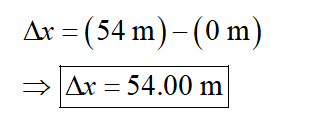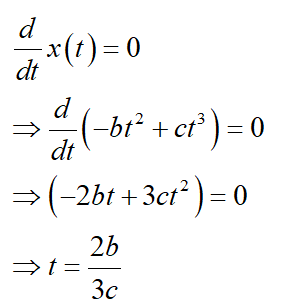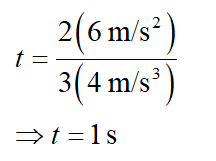a) displacement and distance traveled during the time interval t = 0 to t = 3 s (Enter your answers to at least two decimal places.) (b) average velocity and average speed during the time interval t = 0 to t = 3 s (Enter your answers to at least two decimal places.) (c) average acceleration during the time interval t = 0 to t = 3 s
a) displacement and distance traveled during the time interval t = 0 to t = 3 s (Enter your answers to at least two decimal places.) (b) average velocity and average speed during the time interval t = 0 to t = 3 s (Enter your answers to at least two decimal places.) (c) average acceleration during the time interval t = 0 to t = 3 s
College Physics
11th Edition
ISBN:9781305952300
Author:Raymond A. Serway, Chris Vuille
Publisher:Raymond A. Serway, Chris Vuille
Chapter1: Units, Trigonometry. And Vectors
Section: Chapter Questions
Problem 1CQ: Estimate the order of magnitude of the length, in meters, of each of the following; (a) a mouse, (b)...
Related questions
Concept explainers
Topic Video
Question
The equation
x(t) = −bt2 + ct3
gives the position of a particle traveling along the x axis at any time. In this expression,
b = 6.00 m/s2,
c = 4.00 m/s3,
and x is in meters when t is entered in seconds. For this particle, determine the following. (Indicate the direction with the sign of your answer as applicable.)
(a) displacement and distance traveled during the time interval
(b) average velocity and average speed during the time interval
(c) average acceleration during the time interval
t = 0
to
t = 3 s
(Enter your answers to at least two decimal places.) (b) average velocity and average speed during the time interval
t = 0
to
t = 3 s
(Enter your answers to at least two decimal places.) (c) average acceleration during the time interval
t = 0
to
t = 3 s
Expert Solution
Step 1
a)
Particle’s position at t= 0s,

Here, t represents the time.
Substitute the relevant values.

Particle’s position at t= 3s,

Substitute the relevant values.

The particle’s displacement can be represented as,

Substitute the relevant values.

Now, let us find the turning point of the particle,

Substitute the relevant values.

Thus, the particle changes direction at t = 1s.
Trending now
This is a popular solution!
Step by step
Solved in 4 steps with 29 images

Knowledge Booster
Learn more about
Need a deep-dive on the concept behind this application? Look no further. Learn more about this topic, physics and related others by exploring similar questions and additional content below.Recommended textbooks for you

College Physics
Physics
ISBN:
9781305952300
Author:
Raymond A. Serway, Chris Vuille
Publisher:
Cengage Learning

University Physics (14th Edition)
Physics
ISBN:
9780133969290
Author:
Hugh D. Young, Roger A. Freedman
Publisher:
PEARSON

Introduction To Quantum Mechanics
Physics
ISBN:
9781107189638
Author:
Griffiths, David J., Schroeter, Darrell F.
Publisher:
Cambridge University Press

College Physics
Physics
ISBN:
9781305952300
Author:
Raymond A. Serway, Chris Vuille
Publisher:
Cengage Learning

University Physics (14th Edition)
Physics
ISBN:
9780133969290
Author:
Hugh D. Young, Roger A. Freedman
Publisher:
PEARSON

Introduction To Quantum Mechanics
Physics
ISBN:
9781107189638
Author:
Griffiths, David J., Schroeter, Darrell F.
Publisher:
Cambridge University Press

Physics for Scientists and Engineers
Physics
ISBN:
9781337553278
Author:
Raymond A. Serway, John W. Jewett
Publisher:
Cengage Learning

Lecture- Tutorials for Introductory Astronomy
Physics
ISBN:
9780321820464
Author:
Edward E. Prather, Tim P. Slater, Jeff P. Adams, Gina Brissenden
Publisher:
Addison-Wesley

College Physics: A Strategic Approach (4th Editio…
Physics
ISBN:
9780134609034
Author:
Randall D. Knight (Professor Emeritus), Brian Jones, Stuart Field
Publisher:
PEARSON